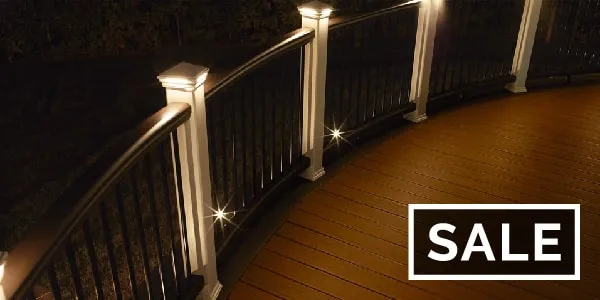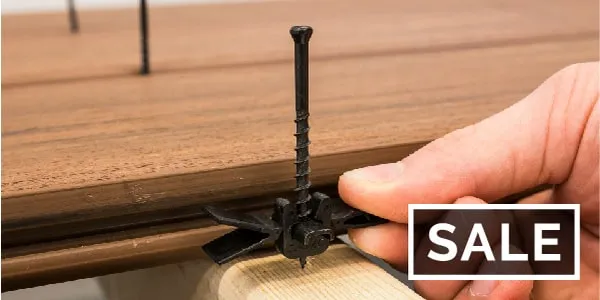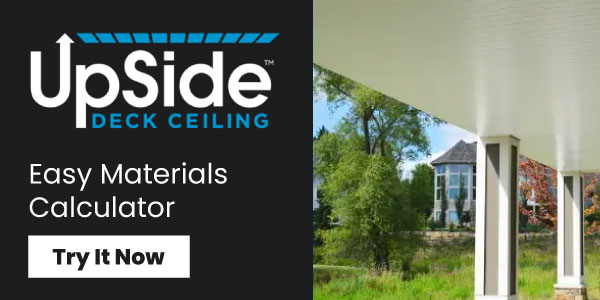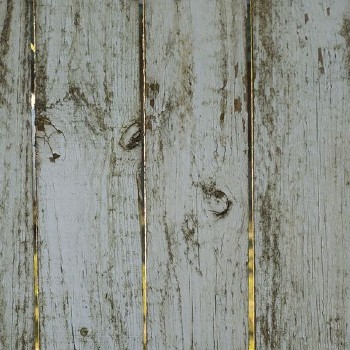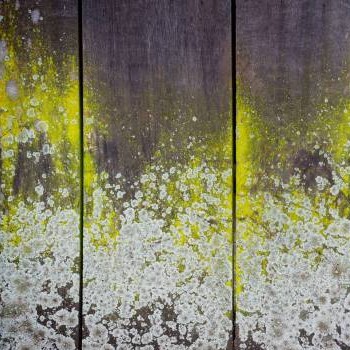How To Remove Mold From Wood or Composite Decks
Unsealed or uncapped wood easily absorbs water, making it an ideal environment for fungus to grow. Even sealed wood or capped composite material can occasionally fall victim to mold or mildew growth. Since mold can trigger health issues and allergies, as well as slips and falls on the deck, it’s important to act quickly if you see signs of mold. Mold grows in many different forms, colors, and shapes on wood and deck board surfaces. Let's learn how to clean mold and algae from wood and decking to help prevent slips and falls on the deck.
Table of Contents:
- Common types of deck growths
- Cleaning instructions
- How to clean mold from wood deck
- How to clean mold from composite decking
- How to remove moss and algae from wood deck
- How to remove moss and algrae from composite decking
- Other deck cleaning products
- Preventing green mold, moss and green algae growth
Common Types of Deck Growths
If you see a growth on your deck, it could be one of several different organisms that cause problems in outdoor living spaces. A few of the most-common deck growths in the United States are:
- Mold
- Mildew
- Algae
- Moss
What Is The Difference Between Mold, Moss and Algae?
Mold and mildew are fungi that live off of dead organic matter. They grow and spread by decomposing things like fallen pine needles, leaves, twigs, or even the fibers of your wood deck boards.
Mold is the more dangerous of the two. Mold is typically slimy, fuzzy, and raised off your deck surface. Mildew lives on surfaces and lays flat - most often, it’s dry and powdery.
Moss and Algae, meanwhile, are plants that live off of sunlight and water. They don’t decompose your wood deck boards like fungi do, but over time, they can still cause damage to wooden deck boards and rails.
Mold, mildew, moss and algae are all unsightly additions to your deck’s appearance. Fortunately, you can treat and remove them all yourself, typically by mixing up a homemade deck cleaner and scrubbing. We’ll run through cleaning methods for each below, then give you some preventative measures to stop deck growths before they start.
Cleaning Instructions
Cleaning methods will vary slightly depending on your deck material (wood or composite) and whether you’re treating a fungi (mold or mildew) or a plant growth (moss or algae).
How to Clean Mold from Wood Deck
To remove mold from painted or stained lumber:
- Make sure the area is relatively dry. Wear protective gloves and/or goggles if needed.
- Use a shop vac, hosed vacuum, or broom to lightly remove any other dirt or debris from the area and throw it away immediately.
- Combine approximately 1 tablespoon of dishwashing detergent (like Dawn® or Joy®) to 1/4 gallon of warm tap water in a clean bucket to create your homemade wood deck cleaner solution.
- Use a soft-bristled brush or an old toothbrush to scrub the affected area of your deck surface until mold is gone.
- Wipe the area with a dry, clean rag.
- Fill a spray bottle with undiluted vinegar and spray the affected area.
- Wait one hour, then once again wipe dry with a clean rag.
To remove mold from raw, untreated lumber:
- Make sure the area is relatively dry. Wear protective gloves and/or goggles if needed.
- Use a shop vac, hosed vacuum, or broom to lightly remove any other dirt or debris from the area and throw it away immediately.
- Combine approximately 2 fluid ounces of dishwashing detergent (like Dawn® or Joy®) 500 ml (or 1/10th of a US gallon) of bleach, and 1/4 gallon of warm tap water into a clean bucket.
- Use a hard-bristled brush or scrub-sponge to wash the affected area until mold is gone.
- Let the area air day.
- If the mold or discoloration is still present, use fine-grit sandpaper to clear the surface that the mold is growing on.
How to Clean Mold from Composite Decking:
- Make sure the area is relatively dry. Wear protective gloves and/or goggles if needed.
- Combine approximately 1 tablespoon of dishwashing detergent (like Dawn® or Joy®) with 1/4 gallon of warm, tap water.
- Use a soft-bristled brush or old toothbrush to scrub the affected area until mold is gone.
- Wipe the area with a dry, clean rag. NOTE: DO NOT USE A PRESSURE WASHER AS IT MAY DAMAGE YOUR COMPOSITE DECKING.
- Fill a spray bottle with undiluted vinegar and spray the affected area.
- Wait one hour, then once again wipe dry with a clean rag.
How to Remove Moss and Algae from Wood Deck
To remove moss and algae from stained, painted, or untreated wood lumber:
- Create a homemade deck cleaner solution by combining one gallon of warm tap water and ¾ cup of chlorine bleach together in a clean bucket.
- If your deck is especially overtaken by moss or green algae, add an extra ⅓ cup of ammonia-free laundry detergent powder to your cleaning solution for extra effect.
- Gently pour the solution onto your deck, covering the moss and/or algae, and allow it to sit for about 20 minutes.
- Use a hard-bristled scrub brush or shop broom to scrub away the moss and green algae from the deck board surface.
- Rinse the wood surface with a garden hose or tap water to remove the solution and any moss residue. You may use a power washer, but make sure to use a fanning nozzle as it will prevent damage to your paint, stain, or wood.
- Let the space air dry completely.
How to remove moss and algae from composite decking:
- Create a homemade deck cleaner solution by combining one gallon of warm tap water and ¾ cup of chlorine bleach together in a clean bucket.
- If your deck is especially overtaken by moss or green algae, add an extra ⅓ cup of ammonia-free laundry detergent powder to your cleaning solution for extra effect.
- Gently pour the solution onto your deck, covering the moss and/or algae and allow it to sit for about 20 minutes.
- Use a hard-bristled scrub brush or shop broom to scrub away the moss and algae from the deck board surface.
- Rinse the surface with a garden hose or tap water to remove the cleaning solution and any moss residue. NOTE: DO NOT USE A PRESSURE WASHER AS IT MAY DAMAGE YOUR COMPOSITE DECKING.
- Let the space air dry completely.
Other deck cleaning products
You can also clean mold from decking, remove moss from your deck, and remove green algae from wood with a deck cleaner and brightener: we recommend the DeckWise Wood Deck Cleaner and Brightener. In stock and ready to use, this strong cleaner prevents mold, blocks algae growth and brings new life back to your outdoor space.
Preventing Green Mold, Moss and Green Algae Growth
You can save yourself time and money by being proactive - protecting your deck from mold, moss, mildew and algae before it takes hold. Here are a few simple ways to keep unwanted deck growths from moving in:
- Apply a deck stain or sealer: deck finishes seal over your deck boards to keep moisture out. That’s a big deterrent for fungi and plants, which need damp environments to survive.
- Clean your deck regularly: fungi like mold and mildew feed on organic matter - and a deck covered in leaves, pine needles and dirt is like a buffet table for these deck pests. Regularly sweeping debris off your deck will starve out any potential fungal invaders.
- Choose composite deck boards: one huge advantage of composite deck boards are their protective shells, which keep water from seeping into your boards. Compared to wood boards, composite boards require less cleaning and less maintenance to keep fungi and deck growths away.


